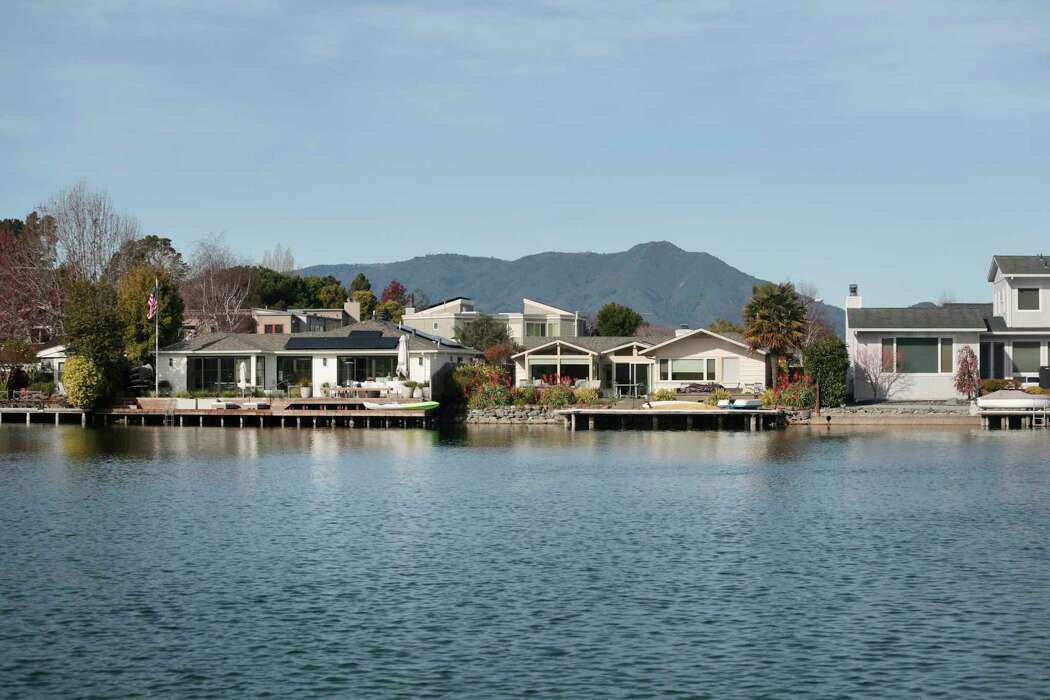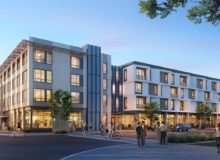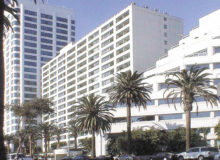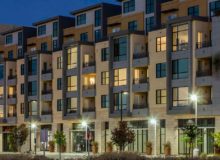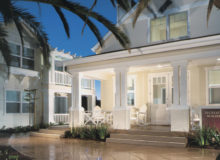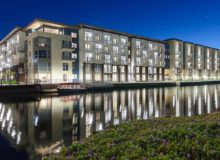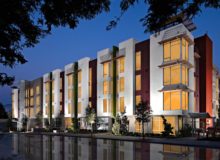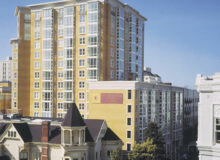San Francisco Chronicle
January 24, 2022
By J.K. Dineen
Belvedere Lagoon, an H-shaped body of water in Marin County tucked between Tiburon Peninsula and Belvedere Island, made news last summer when it was infested by hundreds of dinner-plate-size moon jellyfish.
The affliction was notable enough that the Redwood Bark, the student newspaper of Redwood High School, ran a feature on the topic in which sophomore Jonah Momsen was quoted as saying that the jellyfish were a turnoff when it came to swimming, but scientifically intriguing.
“Obviously it is not a huge problem that rich people on the lagoon cannot swim sometimes, but it would definitely be cool to solve it and it could be interesting to learn about it,” Momsen said.
These days the jellyfish seem to have mostly vanished from the lagoon, but some local residents are concerned about the arrival of a different species that has been even rarer in California’s wealthiest town: housing developers.
For the first time in 33 years a developer is proposing to build a multifamily complex in Belvedere, which was deemed California’s richest city in 2020. The 42-unit, mixed-income Mallard Pointe development would replace the 22-apartment rental complex that currently exists on the 2.8-acre site. The development, owned by an affiliate of Thompson Dorfman Partners LLC, would include 19 homes fronting onto the lagoon as well as a 23-unit apartment building on the land side of the property.
The project would include five deed-restricted affordable units, priced at families making between 60% and 80% of area median income —between about $77,000 and $100,000 for a couple. It would include six single-family homes on the lagoon, three of which would include more affordable accessory dwelling units. Another five of the apartments would be smaller, one-bedroom units, which will be “affordable by design,” according to developer Bruce Dorfman.
Dorfman said the project would represent Belvedere’s first-ever mixed-income development and that his group has tried to minimize impacts. At 13 units an acre it is significantly less dense than zoning would allow —with state density bonus laws the parcel could accommodate 80 homes. The last affordable units built in Belvedere, 11 senior apartments, opened in 1989, while the last market-rate, multifamily complex opened in 1969. Belvedere does not have an inclusionary housing law that requires developers to include below market rate homes.
“We are not trying to break a glass ceiling,” Dorfman said. “We are trying to do something that is consistent and contextual that the city should embrace. We think we have done that from a design standpoint.”
However, the proposal, which will be submitted to the city next week, is causing consternation in a town where the average home sells for $3.3 million and where lagoon-fronting homes regularly fetch between $5 million and $10 million.
The development has prompted the formation of a group called Belvedere Residents for Intelligent Growth, or BRIG. In a statement, provided by retired attorney John Hansen, the group said it has “serious concerns about the potential impacts on local flood control, zoning consistency and soil stability that could be caused by this large-scale waterfront subdivision.”
“We also share the concerns of our neighbors — seniors and young families — who face displacement from their rental units if the existing structures are demolished,” said the BRIG statement. “We are all for progress but smart progress. We are working with the City of Belvedere to ensure we meet our state-mandated affordable housing goals in a way that is environmentally sustainable and protective of the rights of existing residents and rent-paying tenants.”
Dorfman said that existing tenants, who pay about $6,000 for a 1,000-square-foot two-bedroom apartment, would be given the right to return when the new units are built. They will be given $6,500 in relocation funds and another $7,500 if they choose to come back into the new apartments.
The current owners bought the property in 2020 for $21 million. At first they looked at renovating the existing units, which have cramped kitchens and tiny bathrooms that are not wheelchair-accessible. There are also soil settlement issues because the units were built on what was filled-in marshland. But those renovations would have required that the homes be jacked 6 or 7 feet higher.
“Looking at it we thought, ‘Why are we raising antiquated floorplans? Why wouldn’t we start from scratch?’” Dorfman said.
The 66-acre lagoon, home to about 280 families, is owned and maintained by the Belvedere Lagoon Property Owners’ Association. While lagoon residents sail and kayak on the landlocked water, there is no public access. Motorized boats are not permitted. Most of the homes on the lagoon were built in the 1950s, although many have been torn down and replaced with more modern structures.
Under the state-mandated Regional Housing Needs Allocation program — known as RHNA — Belvedere must plan for about 160 new housing units between 2023 and 2030. Like many other communities Belvedere appealed its RHNA allocation, arguing that producing 160 new homes was a stretch in a town that is largely made up of water and steep hillside lots that were long ago built on.
“We are mostly water and a couple of islands and there is not a lot of open lots,” said Belvedere City Manager Craig Middleton. “It’s a heavy lift, but we are committed to trying to do it.”
The Mallard Pointe proposal is the only new housing in Belvedere’s pipeline.
“It’s a modest amount in terms of meeting the city’s RHNA — but at least it’s something,” said Eric Hohmann, a former Belvedere resident who is part of the development team.
Middleton said he couldn’t comment on the Mallard Pointe proposal because it has yet to be submitted. But he said the area is probably one of the few properties where densification is possible. “I’m looking forward to seeing it,” he said.
Architect Alex Seidel, who bought a home on the lagoon 25 years ago, said the Mallard Pointe proposal is consistent with the renovations and rebuilds that have become commonplace. Seidel said he has watched the Mallard Point homes settle into bay mud over the years, and that the structures would need to be replaced soon in anticipation of further subsistence and sea level rise.
“As a resident I embrace the idea the state has put out that all California communities should do what they can to increase housing stock,” he said. “Personally I would welcome the opportunity to share a rather lovely community with a few more folks and I think (Mallard Pointe) is our best opportunity to add some new housing units.”
For younger Marin-natives like Ethan Strull, a Bowdoin College student who is concerned with environmental justice and housing affordability, the project could create some opportunities for families who have been historically shut out of the mostly white, wealthy Marin County. Strull grew up in Tiburon and San Rafael.
“Growing up in Marin it’s not hard to see the inequities that are ever present here,” he said. “Every single part of Marin has a role in helping to desegregate the county and Belvedere is one of the most extreme examples.”
Given that Belvedere has seen almost no new housing built since the Summer of Love, it’s not surprising that residents would balk at a new apartment, even one that is slated to be just 34 feet tall.
“It’s the Manhattanization of Belvedere,” Dorfman joked. The pushback we are getting is the same you would get in Lafayette and in lot of other places where there is a sense of ‘why do these state laws apply to us?’”

